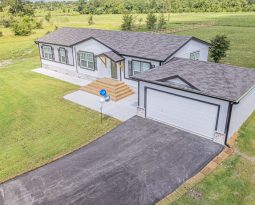How Manufactured Homes Could Move The Needle on Affordability
Source: National Mortgage News – Stacey Epperson first saw the possibility that manufactured housing held as a sustainable homeownership solution several years ago when working in a job that sent her to families in Appalachian Kentucky.
“Their mobile homes were old. They were in bad repair, but they still owed money for them. They had loans on them, I thought that was a problem,” she said.
“I thought a simple solution was to really do the home really well– really high quality – educate the consumer and get them a good loan. Just kind of like normal housing,” she said.
“And maybe they wouldn’t fall apart around them before they paid it off.”
Her search for a solution eventually led to the Next Step Networks, a Louisville, Kentucky-based nonprofit Epperson leads today as president and CEO. The organization aims to educate consumers and stakeholders in the housing and lending industries about prefabricated, factory built homes while showcasing their potential as a viable source of affordable homeownership.
Many in the housing industry, like Epperson, similarly think modern prefabricated constructions represent a prime opportunity to alleviate affordability and inventory challenges the U.S. is currently facing. But obstacles, ranging from “mobile home’s” past reputation of poor quality to current zoning regulations, still stand in the way.
With the U.S. experiencing a supply gap of between three to five million homes by most estimates, though, it won’t come close to closing it without prefabricated construction, Epperson said. “It’s got to be a part of the solution.”
While manufactured units have been dogged in the past with the perception of shoddiness, often because of its early association with mobile homes, a window for growth is emerging as consumer sentiment shifts, thanks to improved design and construction standards.
“I think the deficiencies of the old “mobile homes” was – very low. The standards were low.Those standards have gone up,” Mike Loftin, CEO of Homewise, a New Mexico-based non-profit enterprise helping state residents achieve homeownership.
Likelihood to consider purchasing a manufactured home
Recent data shows a majority of consumers open to the idea of living in a manufactured home. In research conducted by Freddie Mac in 2022. Approximately 62% of people said they would likely consider the purchase of manufactured housing in the future with the share skewing higher among younger populations. Whereas only 40% of baby boomers indicated they would entertain the thought of purchasing manufactured housing, the percentage grew to over 60% among all other age groups.
In a sign of the expected role factory-built homes can play in creating more affordability, the Department of Housing and Urban Development actively boosted its support for the effort in 2023. In June. HUD introduced a new independent office of manufactured housing programs, which falls directly under the jurisdiction of Federal Housing Administration Commissioner Julia Gordon.
Manufactured home construction appears to have support from the federal government, with the Biden administration regularly highlighting the role it can play in his affordable housing goals. Among the president’s stated housing aims are new financing mechanisms for manufactured homes as well as the expansion of construction-to-permanent loan options to reduce the housing shortage.







